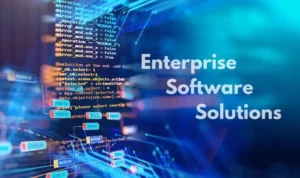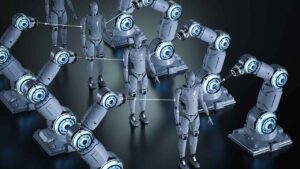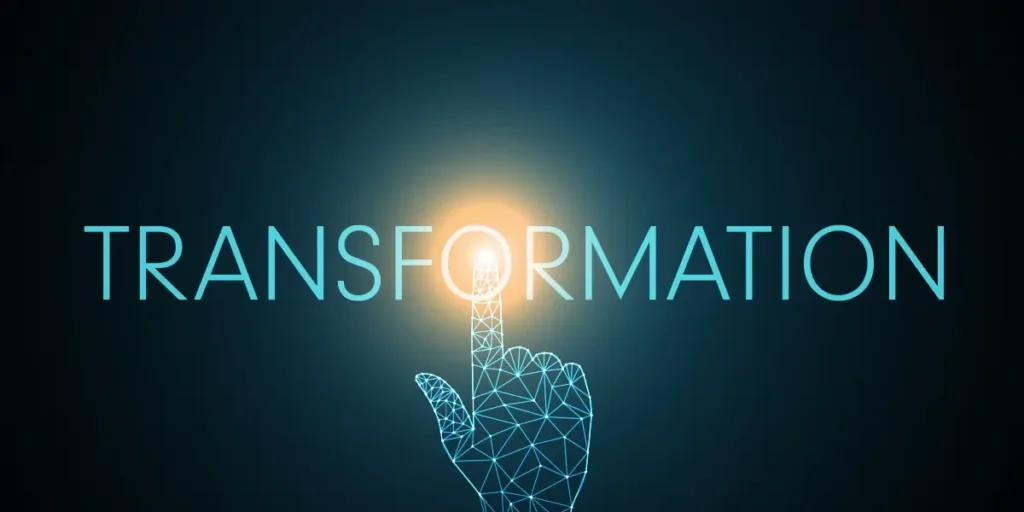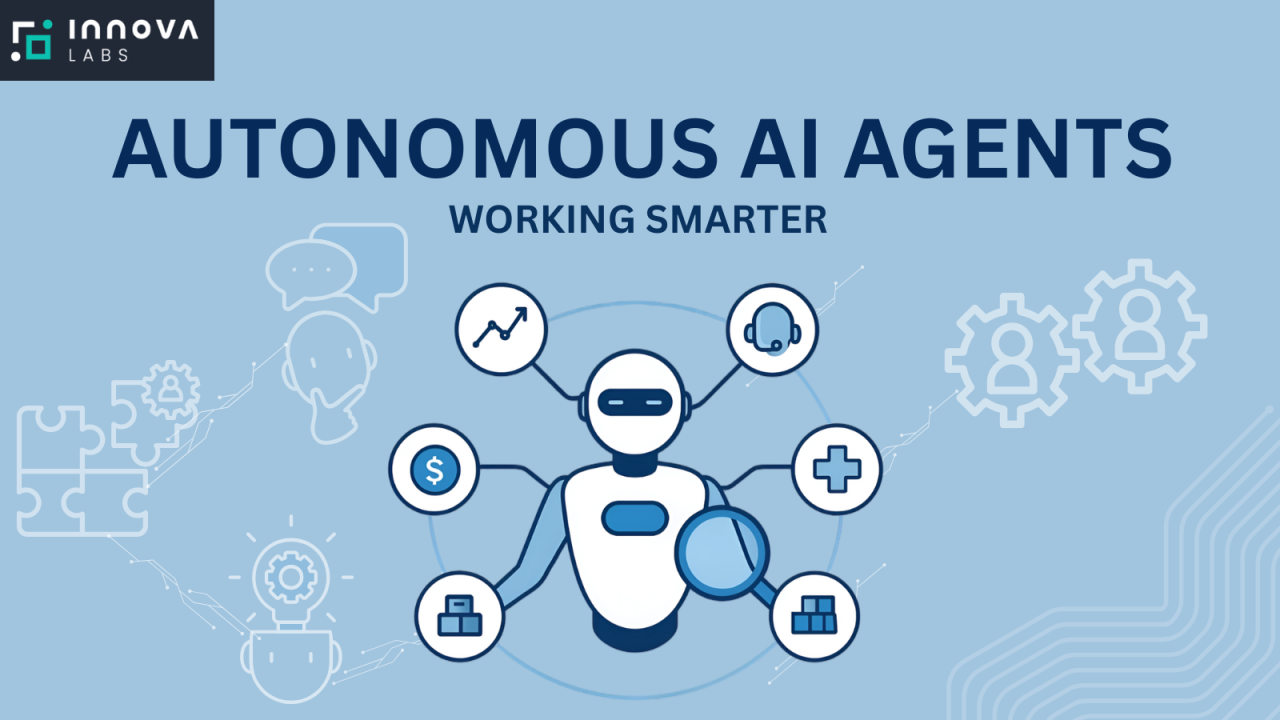Multi-Agent System in Enterprise Software: Redefining Enterprise Intelligence in 2025
Introduction
Enterprise software has always been the backbone of modern organizations—driving workflows, managing resources, and supporting large-scale decision-making. However, traditional enterprise systems were built for structured processes and predictable inputs. In today’s rapidly changing business landscape, such rigidity is no longer enough.
Enter Multi-Agent Systems (MAS)—a transformative AI-driven paradigm reshaping how enterprises operate, collaborate, and innovate. By combining autonomous agents that work together to solve complex business challenges, MAS introduces adaptability, intelligence, and dynamic decision-making into enterprise environments.
In 2025, with AI agents becoming more capable, context-aware, and connected, Multi-Agent Systems in enterprise software have evolved from a futuristic concept to a business necessity.
What Is a Multi-Agent System (MAS)?
A Multi-Agent System is a collection of autonomous, intelligent entities—called agents—that interact with each other and their environment to achieve common or individual goals. These agents can:
-
Perceive their environment,
-
Communicate and collaborate with other agents,
-
Make independent decisions,
-
Learn from data and adapt over time.
In an enterprise context, each agent may represent a distinct business function—like procurement, logistics, marketing, HR, or finance—operating independently yet collaborating seamlessly for organizational success.
For example, in an AI-driven enterprise resource planning (ERP) system, one agent may monitor supply chain logistics, another may predict demand patterns, while a third may optimize cost efficiency. Together, these agents create a self-optimizing ecosystem.
How Multi-Agent Systems Work in Enterprise Software
Multi-Agent Systems are often built using a modular architecture that enables interoperability and scalability. Here’s how they typically function within enterprise applications:
-
Agent Initialization:
Each agent is designed with a specific objective—like automating invoices, monitoring network performance, or analyzing customer data. -
Communication and Coordination:
Agents use communication protocols (like FIPA-ACL or custom APIs) to exchange information, negotiate actions, and synchronize goals. -
Autonomous Decision-Making:
Using machine learning models and rule-based logic, agents make real-time decisions within their domain, often without human intervention. -
Collaboration and Conflict Resolution:
When multiple agents pursue conflicting objectives (e.g., cost reduction vs. quality assurance), they use negotiation or optimization algorithms to align outcomes. -
Learning and Adaptation:
Through continuous feedback and reinforcement learning, agents refine their strategies, making the overall system more efficient over time.
The result is a distributed intelligence framework where enterprise software becomes more dynamic, resilient, and adaptive—capable of evolving with changing business conditions.
Why Enterprises Are Adopting Multi-Agent Systems
The adoption of Multi-Agent Systems (MAS) is accelerating across industries for several reasons:
1. Decentralized Intelligence
Traditional enterprise software relies on central decision-making models, which often create bottlenecks. MAS decentralizes intelligence—allowing each agent to make local decisions that contribute to a global objective. This significantly improves responsiveness and reduces latency in decision-making.
2. Enhanced Scalability
In large enterprises, scaling operations across departments and geographies is a major challenge. MAS architectures are inherently scalable, as new agents can be deployed to handle emerging processes or data streams without disrupting existing workflows.
3. Real-Time Decision-Making
Agents continuously process real-time data—from IoT devices, CRM systems, and ERP platforms—to make intelligent decisions on the fly. This leads to faster reaction times, better situational awareness, and predictive capabilities.
4. Interoperability and Integration
Multi-agent systems integrate easily with legacy enterprise applications, APIs, and cloud-based tools. This makes it possible for organizations to enhance their current infrastructure without costly replacements.
5. Continuous Optimization
Because agents can learn and adapt, MAS continuously optimizes enterprise operations—automating repetitive tasks, reducing costs, and improving overall efficiency.
Applications of Multi-Agent Systems in Enterprise Software
Let’s explore how MAS is revolutionizing various enterprise domains in 2025.
1. Supply Chain Management
In supply chain systems, multiple agents collaborate to manage procurement, inventory, logistics, and demand forecasting.
-
Procurement Agent: Negotiates with suppliers using pricing data.
-
Inventory Agent: Monitors stock levels and predicts shortages.
-
Logistics Agent: Optimizes delivery routes using real-time traffic data.
Together, these agents maintain supply chain efficiency while minimizing costs and delays.
2. Finance and Accounting
MAS automates complex financial processes:
-
Audit Agents detect anomalies in financial records.
-
Transaction Agents ensure compliance with internal policies.
-
Forecasting Agents analyze trends to predict cash flows and investment opportunities.
This level of automation enhances accuracy, reduces fraud, and accelerates financial reporting.
3. Human Resource Management
In HR software, agents handle recruitment, employee engagement, and performance analysis:
-
Recruitment Agents screen candidates based on predefined skills.
-
Engagement Agents monitor employee satisfaction through behavioral analytics.
-
Learning Agents recommend personalized upskilling courses.
The result: a more efficient and adaptive workforce management ecosystem.
4. Customer Relationship Management (CRM)
MAS-driven CRMs can manage millions of customer interactions simultaneously:
-
Customer Agents provide personalized responses.
-
Sales Agents predict purchasing behavior.
-
Support Agents handle ticket resolution autonomously.
This creates a hyper-personalized, always-on customer experience.
5. Cybersecurity
Agents can patrol digital ecosystems like intelligent sentinels:
-
Monitoring Agents scan for unusual activity.
-
Threat Agents simulate potential attack scenarios.
-
Response Agents take immediate containment actions when threats are detected.
Together, they build an AI-powered enterprise immune system that adapts to evolving cybersecurity threats.
6. Manufacturing
In smart manufacturing, MAS coordinates robotic systems, quality control, and production planning.
-
Production Agents schedule machines for optimal throughput.
-
Quality Agents detect product defects using computer vision.
-
Maintenance Agents predict equipment failures through sensor data.
The factory floor becomes largely self-regulating and predictive.
Architecture of Multi-Agent Enterprise Systems
A typical enterprise-grade multi-agent system consists of the following layers:
-
Perception Layer:
Agents gather data from sensors, databases, APIs, or user inputs. -
Cognitive Layer:
Data is processed using AI models (NLP, ML, reinforcement learning) to make informed decisions. -
Coordination Layer:
Agents communicate with each other using standard protocols for collaboration and negotiation. -
Execution Layer:
Actions are carried out—like triggering automation scripts, updating dashboards, or sending notifications. -
Feedback Layer:
Agents learn from outcomes, adjusting strategies dynamically for improved performance.
This layered architecture ensures modularity, interoperability, and fault tolerance—making MAS ideal for enterprise environments.
Technologies Powering MAS in Enterprise Software
Several technological pillars enable the success of multi-agent systems in modern enterprises:
-
Large Language Models (LLMs): Agents can understand natural language commands and generate intelligent responses.
-
Reinforcement Learning: Enables agents to learn optimal strategies through trial and error.
-
Blockchain: Provides secure, transparent communication and decision tracking among agents.
-
Edge Computing: Allows agents to process data locally for faster response times.
-
API Integration Frameworks: Facilitate seamless communication between agents and legacy enterprise systems.
-
Cloud Infrastructure: Ensures scalability, redundancy, and resource optimization.
Together, these technologies create a robust foundation for enterprise-grade intelligent collaboration.
Benefits of Multi-Agent Systems in Enterprises
Implementing a MAS-driven enterprise system brings measurable benefits:
-
Autonomy and Adaptability:
Agents operate independently and adapt to dynamic market conditions. -
Reduced Operational Costs:
By automating decision-making and coordination, MAS cuts overhead expenses. -
Increased Productivity:
Intelligent task distribution ensures resources are used optimally. -
Enhanced Data-Driven Decisions:
Agents continuously analyze large datasets for actionable insights. -
Improved Customer Satisfaction:
Personalized, real-time interactions powered by intelligent agents lead to better service experiences. -
Risk Mitigation:
Agents identify potential risks—financial, operational, or cybersecurity-related—before they escalate.
Challenges in Implementing Multi-Agent Systems
Despite their potential, MAS integration in enterprise systems is not without challenges:
-
Complex System Design:
Developing communication and negotiation logic between agents requires deep expertise. -
Data Privacy Concerns:
As agents handle sensitive enterprise data, ensuring compliance with GDPR or other regulations is critical. -
Interoperability Issues:
Integrating with legacy infrastructure can be technically demanding. -
Scalability Management:
Ensuring performance consistency as more agents are added to the system can be complex. -
Human Oversight:
Striking the right balance between autonomy and human supervision remains a key concern.
However, as AI governance frameworks and explainable AI models mature, these challenges are being effectively mitigated.
Case Studies: Multi-Agent Systems in Action
1. SAP and AI Agents
SAP is incorporating multi-agent intelligence within its SAP Business AI suite, enabling different software modules—like procurement and finance—to collaborate through autonomous workflows, reducing manual intervention.
2. IBM Watson Orchestrate
IBM’s Watson Orchestrate uses intelligent agents to perform HR and finance tasks—scheduling interviews, approving expenses, and analyzing data—by interacting with business tools like Slack and Salesforce.
3. Microsoft Copilot Ecosystem
Microsoft’s Copilot ecosystem operates as a network of specialized agents that enhance productivity across Microsoft 365 and Dynamics 365 platforms—an example of MAS in mainstream enterprise software.
The Future of Multi-Agent Systems in Enterprises
By 2030, enterprise software will likely be agent-first, where MAS act as the primary drivers of digital ecosystems. We can expect:
-
Agent Marketplaces: Organizations will deploy third-party agents for specialized enterprise functions.
-
Cross-Company Collaboration: Agents from different companies negotiating contracts autonomously.
-
Fully Self-Managing Enterprises: Systems capable of continuous self-optimization, needing minimal human input.
The transition will mirror the shift from monolithic enterprise software to intelligent, distributed, and autonomous ecosystems.
Conclusion
The rise of Multi-Agent Systems in enterprise software marks the next evolutionary step in organizational intelligence. Unlike traditional automation tools, MAS brings autonomy, collaboration, and learning to every layer of enterprise operations.
Businesses that integrate MAS into their infrastructure will enjoy faster decision-making, higher efficiency, and sustainable growth. As AI continues to mature, these systems will evolve into the cognitive backbone of tomorrow’s enterprises—where humans and agents collaborate seamlessly to achieve shared goals.
In short, Multi-Agent Systems aren’t just enhancing enterprise software—they are redefining what it means to be an intelligent enterprise.
For quick updates, follow our whatsapp –https://whatsapp.com/channel/0029VbAabEC11ulGy0ZwRi3j
https://bitsofall.com/https-yourwebsite-com-ai-in-business-and-cloud-transforming-enterprises/
https://bitsofall.com/an-internet-of-ai-agents-coral-protocol-introduces-coral-v1/
MIT Researchers Made AI 64× Better at Planning — Reaching 94% Valid Plans with PDDL-INSTRUCT
Top 15 Model Context Protocol (MCP) Servers for Frontend Developers (2025)









